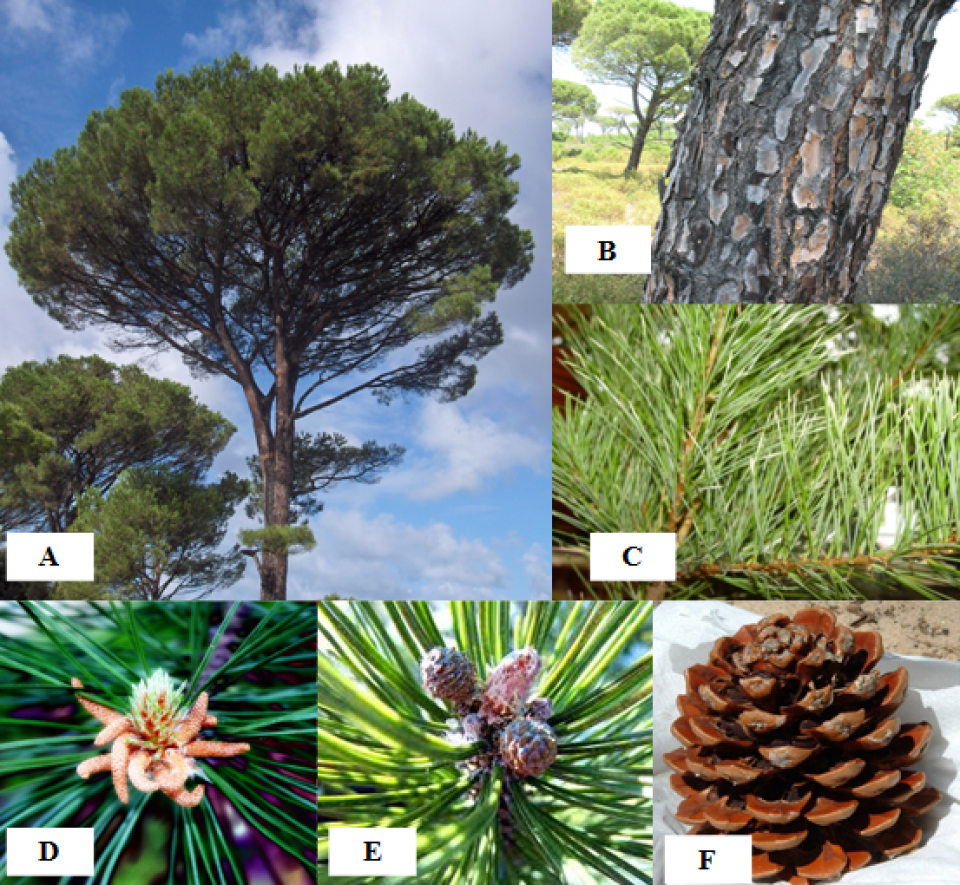
The aim of this work was to evaluate the outcome of PPT content between ultrasound-assisted extraction and the conventional maceration extraction techniques.
The pinion pine is part of the pinea section that includes only the species Pinus pinea, this is due to a certain character, its short-wing hard seed, the transverse tracheal thin-walled and without ornamentation. Pine nut oil is very rich in polyunsaturated fatty acids, which make it a health, nutritive and energetic oil. Rich in phosphorus, vitamin B1 and iron, it is an essential contribution in the intellectual effort. It has a beneficial effect on the respiratory system: cough, chronic bronchitis, asthma and ulcers. In addition, pine needles are known to have also interesting molecules but they are not valorized.
In our study, we evaluated
- The results show that there is no significant different the drying technique as the yields are almost similar
- After the physicochemical analysis, the Pinus pinea extracts have a rather high levels of polyphenols
- The experimental PPT content of both extraction techniques are in agreement with those predicted, this proves that there is no significant difference between the two technics.
In Tunisia, there is an economic importance attributed to Pinus pinea seeds... In contrast, the pine needles are less used. Therefore, it could be useful to develop the use of this pine for their beneficial molecules.
Pinus pinea seeds are collect even though the cones are premature. This affects the seed yields. Valorizing the needles could compensate the loss during the premature collect.
It is important to provide a legalization of the collect period to optimize the seeds yield. The valorization of the pine needles could be a way to provide an extra income to the rural population
Ibtissem Taghouti
Authors : Mahouachi Wifek; Amri Ismail, Mohsen Hanana, Hamrouni Lamia
E-mail : wifekmahouachi@gmail.com
Further information
Nuno Ratolaa, Sílvia Lacorte b, Damià Barceló b, Arminda Alves , 2009, Microwave-assisted extraction and ultrasonic extraction to determine polycyclic aromatic hydrocarbons in needles and bark of Pinus pinaster Ait. and Pinus pinea L. by GC–MS.
Nuno Ratola, Vera Homem b, José Avelino Silva, Rita Araújo , José Manuel Amigo, Lúcia Santos, Arminda Alves, 2014, Biomonitoring of pesticides by pine needles — Chemical scoring, risk of exposure, levels and trends.
Tamás Hofmann*, Eszter Visi-Rajczi, Levente Albert, 1 novembre 2019, Antioxidant properties assessment of the cones of conifers through the combined evaluation of multiple antioxidant assays.
Tansel Kemerli-Kalbaran, Murat Ozdemir,26 December 2018, Multi-response optimization of oil extraction from pine nut (Pinus pinea L.) by response surface methodology: Extraction efficiency, physicochemical properties and antioxidant activity
Wifek Mehouachi

Wifek Mehouachi
